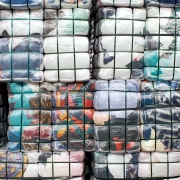BIR Stainless Steel & Special Alloys Committee: “Soft Patch” for Stainless Steel while Nickel Surges to Five-Year High
Recent weeks have brought the “confusing” reality of substantially higher nickel prices but a fall in stainless steel values, according to Joost van Kleef of Oryx Stainless BV in the Netherlands. “So how is that possible?” the Chairman of the BIR Stainless Steel & Special Alloys Committee asked the body’s latest gathering on October 15, 2019.
Two guest speakers at the Budapest meeting looked to provide some answers to the question.
Natalie Scott-Gray, Senior Metals Demand Analyst (EMEA & Asia) at INTL FC Stone Ltd, said the September nickel rally to its highest level in five years was triggered by supply concerns following Indonesia’s decision to bring forward its complete ban on nickel exports to January 2020. The announcement has come at a time of “robust” stainless steel production, booming electric vehicle battery demand and falling LME nickel stocks.
Stainless steel production is forecast to climb 2 % in 2019 – a lower growth rate than in recent years but “not bad” given the more depressed economic climate, stated Ms Scott-Gray. Furthermore, stainless steel demand is projected to jump 16 % over the next five years.
The speaker also highlighted forecasts of an 11 % upswing this year in the average nickel price to US$ 14,556 per tonne, to be followed by a further 17 % hike in 2020 to US$ 17,100. For 2021 and 2022, however, expectations are for more limited growth of, respectively, 0.19 % and 1 %.
Developments in the nickel market will depend on a number of key factors, said Ms Scott-Gray, including the outcome of US/China trade talks and the potential EU lawsuit to the World Trade Organization over the Indonesian nickel ban causing supply shortages.
Fellow guest speaker Olivier Masson, Senior Analyst at Roskill Commodity Research, Consulting & Events, also acknowledged the recent jump in nickel values but insisted “the price is not historically high”. Having declared that the stainless steel market “is going through a relatively soft patch”, he outlined some significant changes in stainless trading patterns, including a drop in US cold-rolled imports since the imposition of S.232 tariffs and the negative impact on China’s exports of hot-rolled material as Indonesia searches for markets for its stainless output.
Looking to the coming decade, Mr Masson suggested the greater adoption of electric vehicles will drive increased requirements for nickel, thus entailing more use of Class I nickel and nickel sulphate for batteries. “To supply this material, more refineries are going to be needed, but a diversion of Class I material from the stainless industry towards the battery industry would also help,” he explained. “Lowering Class I use would require greater Class II use (ie ferro-nickel) and greater scrap use by stainless mills.”
While China and Indonesia are heavily geared towards the use of nickel pig iron in stainless steel production, the USA, Europe and India “are more reliant on scrap”, said Mr Masson, “and I expect that trend to continue.”
Source: Bureau of International Recycling aisbl





